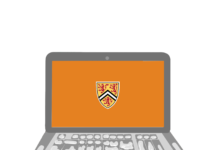Waterloo company 2G Robotics partnered with the National Oceanic and Atmospheric Administration (NOAA) to explore a recently discovered underwater battlefield off the coast of North Carolina. This battlefield is from the WWII Battle of the Atlantic.
The company, founded by Waterloo alumni Jason Gilham, used their cutting-edge long range scanner technology, the ULS-500PRO, to capture true-scale 3-D models of the remains of the battle. At a depth of 700 feet, the internationally-protected war grave is too deep for divers to explore. 2G Robotics mounted their scanners on the Triton 1000/2 submarine to catch their first glimpse of the wreck.
“Seeing the battlefield for the first time was surreal. It was such an amazing experience being able to descend in the submarine to explore the battlefield first-hand and document WWII history,” said Jason Epp, 2G Robotics survey technician.
The battlefield was discovered 48 km off Cape Hatteras, North Carolina in 2014 by the Okeanos Explorer and the SRVX Sand Tiger, two ships participating in NOAA’s Office of Marine Sanctuaries expedition. U-576, the German vessel in the wreck site, had already been damaged and was returning to Germany when it encountered allied convoy KS-520, with 19 merchant ships and five military escort ships.
The U-boat was discovered by the United States Coast Guard’s sonar just before it fired its torpedoes. The U-576 landed a few hits, sinking one ship and damaging two more. However, between sustaining damage from depth charges, air cover, and the military ships’ guns, the German U-boat sank within minutes, killing all 45 of its crew. It lies 220 m from the single ship it succeeded in sinking, the American merchant tanker Bluefields.
This was not 2G Robotics’ first time collaborating with the NOAA. In 2014, they assisted in exploring the Monohansett, a wooden steam barge that burned down on the water at Thunder Bay Island in Lake Huron. Exploring the Monohansett allowed them to demonstrate their company’s shipwreck documentation capabilities and made them the natural choice to bring on board the exploration of the newly discovered WWII battlefield.
The exploration team faced weather challenges when their mission was cut short due to a hurricane warning. The cramped interior of the Triton submarine also made it a challenge to fit both their equipment and crew. The submarine is free-moving (no cables connect it to the launch boat) and can survive unaided for three days in an emergency situation (whether the occupants want to spend three days inside is another question).
2G Robotics hopes to return to the battlefield and finish the scans, but the future of their mission is currently unclear.






























